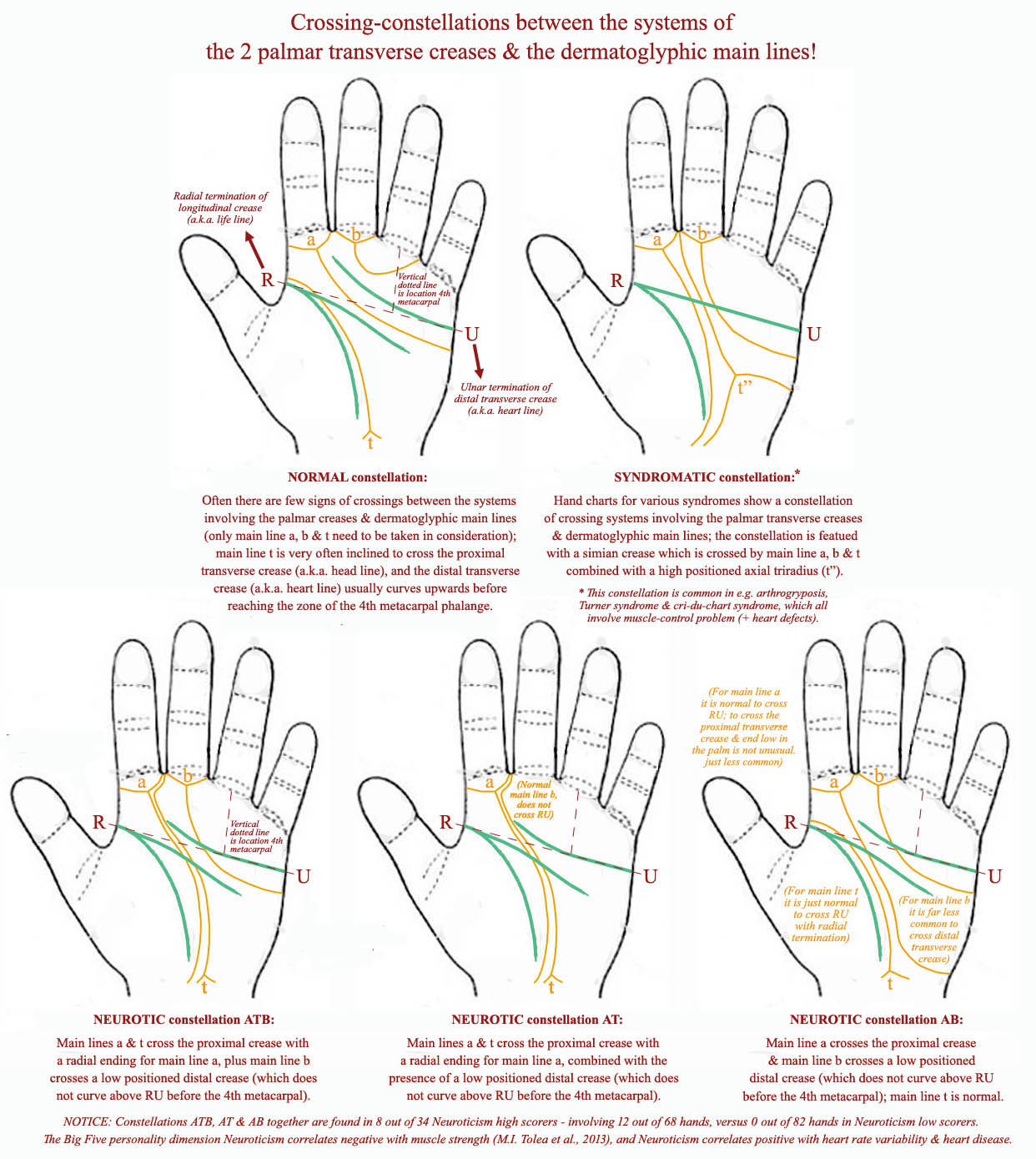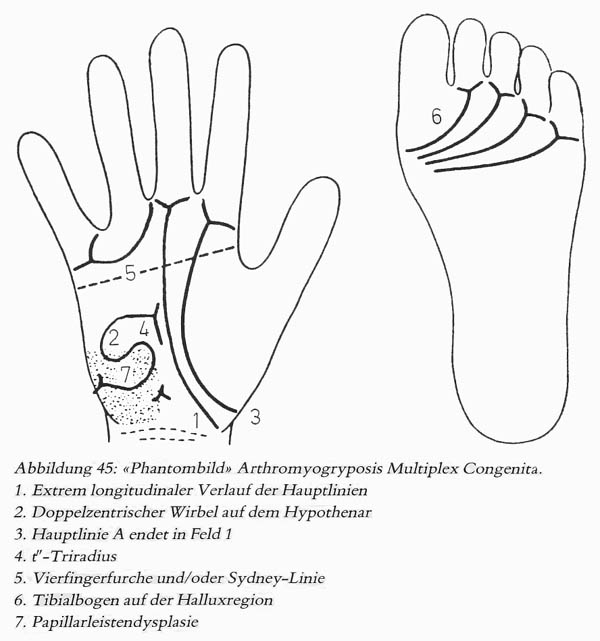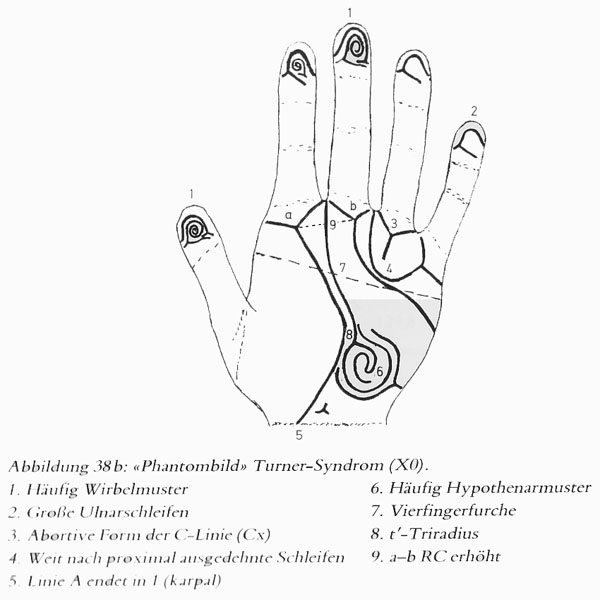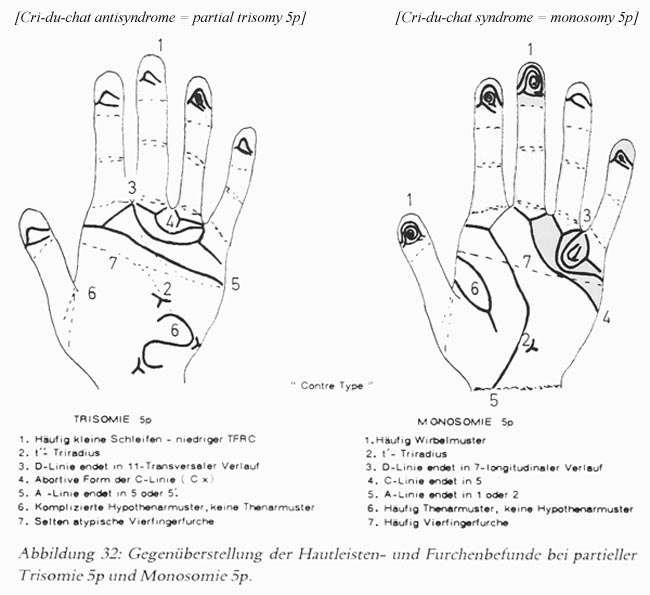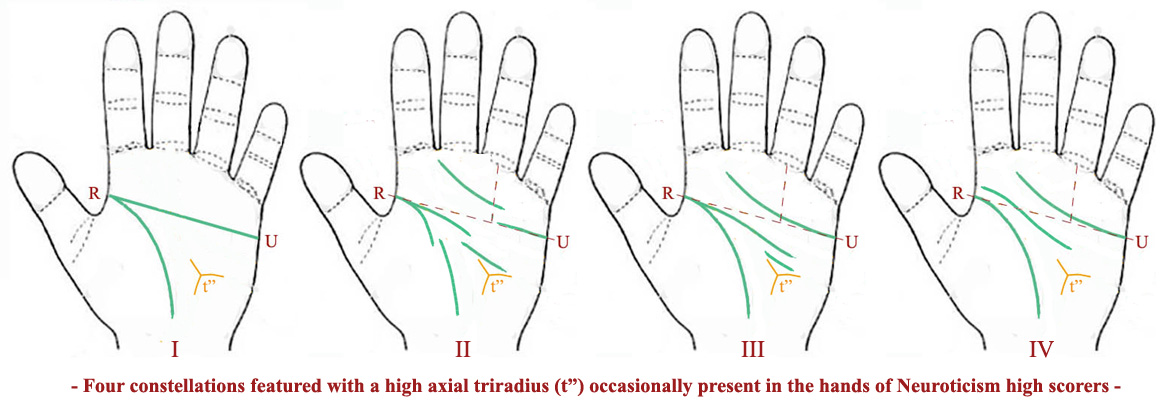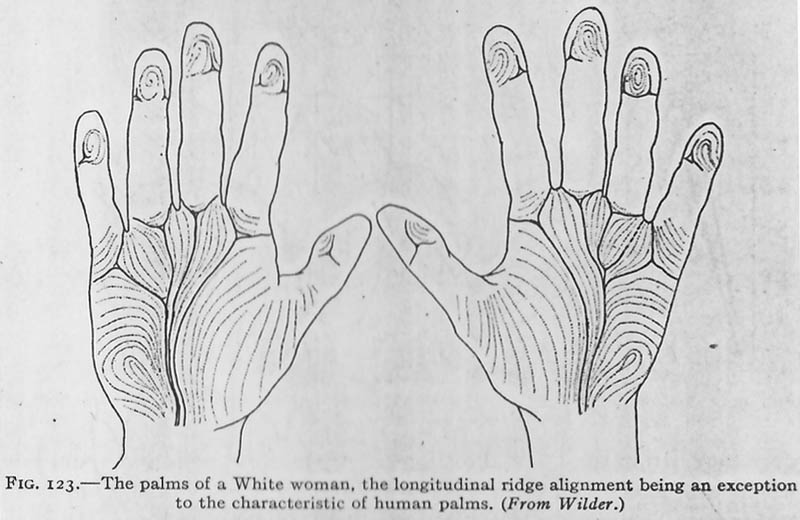|
- Publication date: december 5, 2015 - The Hand in Neuroticism: crossing constellations
|
|
|
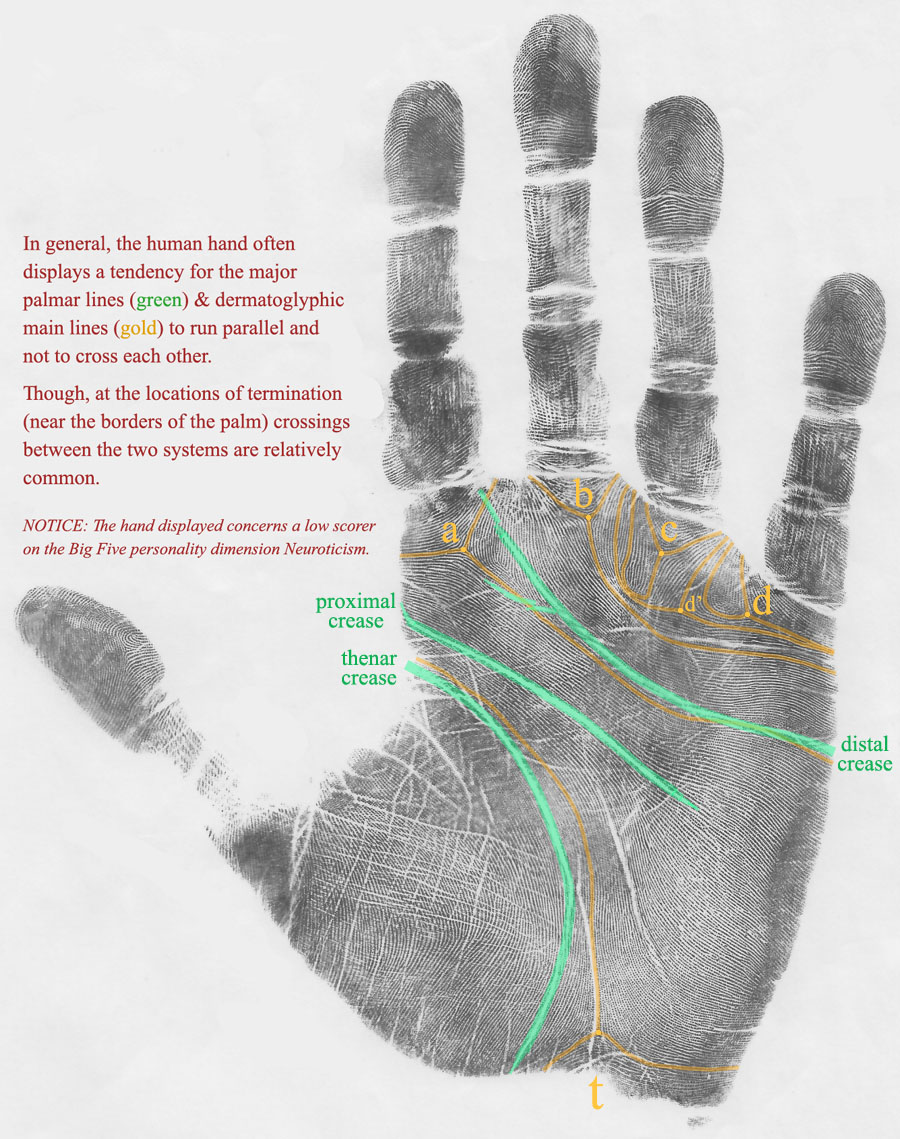
the major transverse creases & the dermatoglyphic main lines.
Neuroticism, ulnar termination of the distal crease
& dermatoglyphic main lines a, b & t.
In this perspective three 'crossing' constellations have been identified; results for the individual constellations are presented inside the table below; the picture displayed below the table describes the details involved with each of the individual constellations.
|
|
